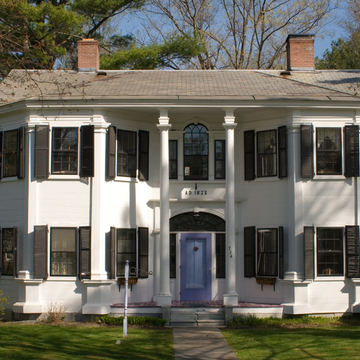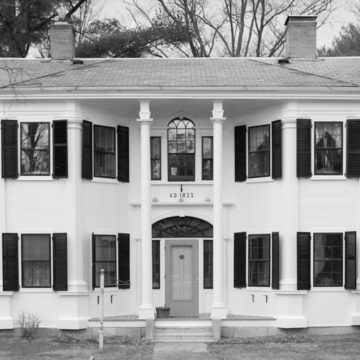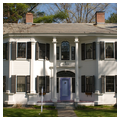Among the most distinctive Federal houses in Vermont were a pair of similarly massed residences Dake built for members of the prominent Langdon family, Dake's former neighbors in Windsor who may have been instrumental in bringing him to Castleton. The Marcus Langdon house (c. 1815) was destroyed by fire, but this house for Benjamin Franklin Langdon survives. Here Dake modified an essentially Georgian plan to reflect the urbane Federal impulse toward shaped rooms and animated facades. The front parlors and chambers project into two-story polygonal bays, joined by a continuous roof to form an inset central porch sheltering a fanlit door and Palladian window. Articulating the undulating matchboarded facade are pilasters on pedestals, echoed on the porch by attenuated Doric columns with entablature blocks. Within is one of Dake's signature staircase compositions—an elliptically vaulted hall that penetrates the depth of the house alongside an enclosed straight staircase entered via a narrower semicircular arch.
You are here
B. F. Langdon House
If SAH Archipedia has been useful to you, please consider supporting it.
SAH Archipedia tells the story of the United States through its buildings, landscapes, and cities. This freely available resource empowers the public with authoritative knowledge that deepens their understanding and appreciation of the built environment. But the Society of Architectural Historians, which created SAH Archipedia with University of Virginia Press, needs your support to maintain the high-caliber research, writing, photography, cartography, editing, design, and programming that make SAH Archipedia a trusted online resource available to all who value the history of place, heritage tourism, and learning.


















